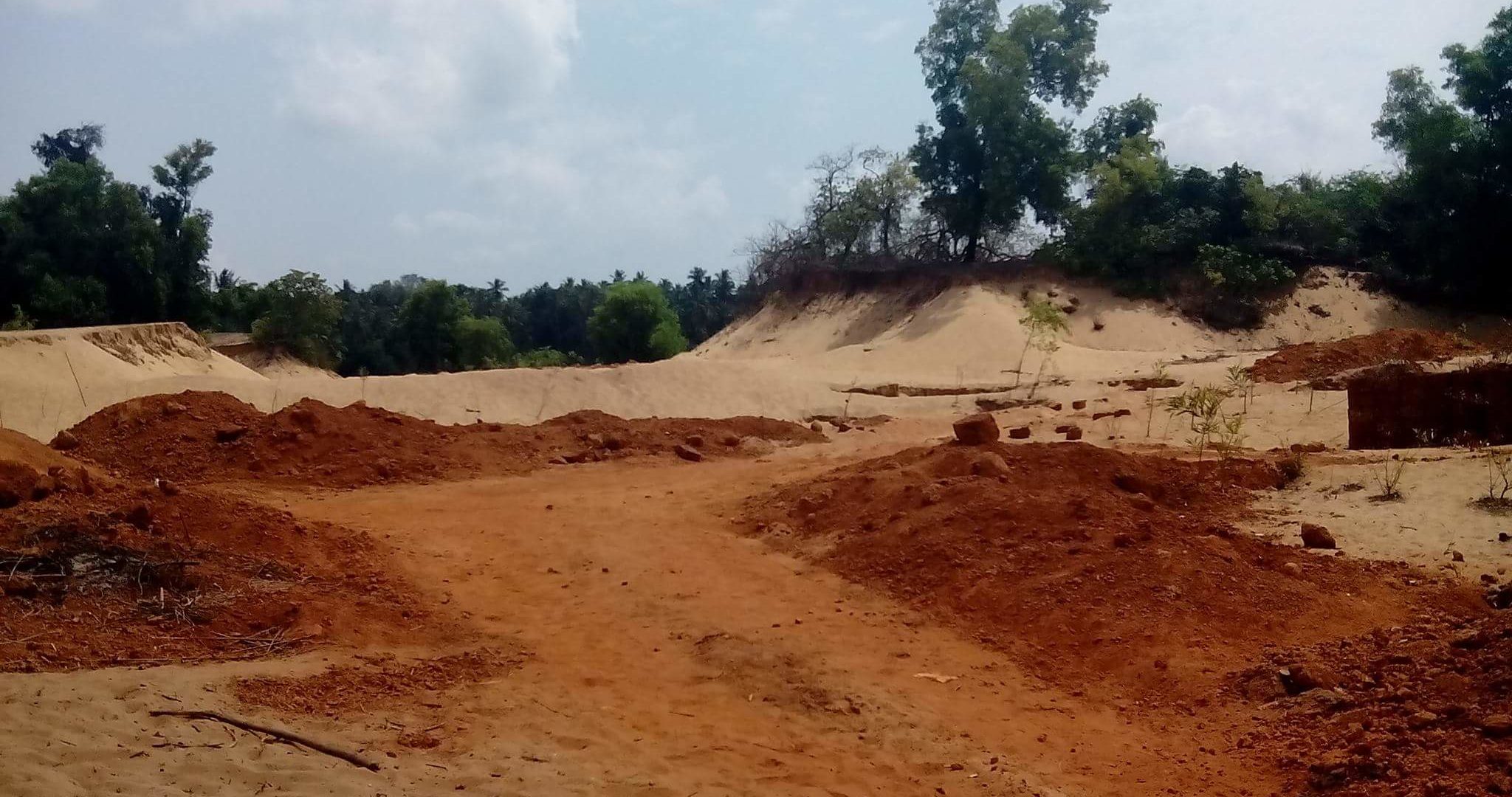
Durgi Naik is a 58 year old woman who lives alone and does household work in Kagal, a small fishing village in Northern Karnataka. Vinod Patgar, an Enviro-Legal Coordinator (ELC) with the CPR-Namati Environmental Justice Program, also hails from this village. His work as an ELC has made him the go-to man for his fellow villagers who face environmental and livelihood based issues. In a three-year long career, several such issues have arisen.
In May 2016, a new problem surfaced. Unplanned and unauthorized silica sand mining was seen to be taking place on private land near the village. Silica sand is mostly found in coastal areas and is of considerably higher value than ordinary sand. Initially only a few truck-loads of silica sand were being extracted but the effects of the mining were soon seen: sinkholes began forming in the area. These sinkholes were problematic. There was a high possibility that through them saltwater would begin entering the area. Durgi’s house was near the mining site. Fearing a saltwater intrusion during the rainy season would eat away at the foundations of her small home, she put forth a complaint to the Gram Panchayat, a local self-government institution at the village or small town level. “If the sand keeps getting extracted I will no longer have a home,” she told them.
The problem affected not only Durgi; at least six other houses were subject to the same fears. Realising that many were affected as a result of this problem, Vinod set out to find a solution, thereby enhancing the status of the case from an individual problem to that of the entire community.
Working with members of the community, Vinod gathered evidence of the illegal mining taking place — proof is of primal importance for any case. Simultaneously, Vinod and a few members of the village started looking into the new Sand Mining Policy, 2011 to see which clauses could be employed to resolve the issue at hand. Since he had worked extensively in the Kagal area in the past, a letter sent by the community to the District Commissioner (DC) prompted a quick response and a site visit was soon carried out.
The site visit was done by the DC and an officer of the Department of Mines and Geology in Karwar. The urgency of the situation was appreciated by the officers and a violation was noted. The private land owners were asked to immediately cease the activities, fined a sum of 6.3 lakh rupees, and told to take corrective measures for any damage which they had caused. All of this happened within a month of registering the problem.
Vinod feels that this was only possible because of two things. Firstly, he says, “I was very lucky to have intense support from my fellow villagers without which a solution is always difficult.” Secondly, he feels that his experience of having worked with government officials in the past helped him to know which office to approach. Without such knowledge it can be very difficult and time consuming for people to figure out which office is responsible for handing which complaint.
Vinod returned to the site three months later to ensure the landowners were complying with the order. From what he say, the silica sand mining had stopped. Additionally he saw that the sinkholes, which had been formed had been filled in by laterite sand in almost 20% of the area and the landowners had also planted trees of casuarina and acacia. Having trees in the area would ensure that the formation of the sinkholes would reduce as the roots would help in holding the sand together.
Though Durgi could not be reached, another client in the case, Harish Patgar, whose house is also located near the sand mining site was elated with the result. “Not only was the mining stopped, the wrong doers were also fined and made to take steps to correct their mistakes. This shows that our plight was noted and action was taken,” says Harish.